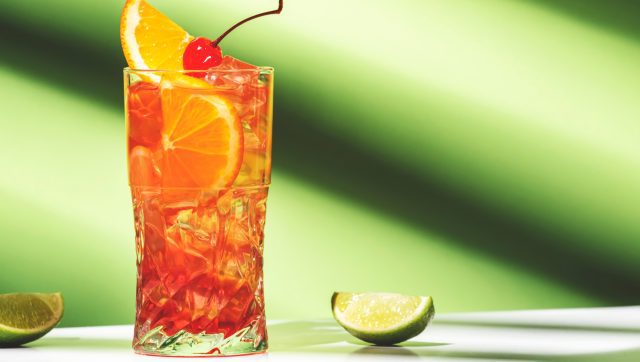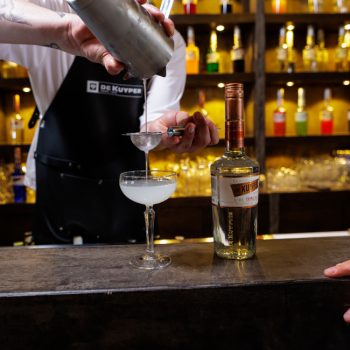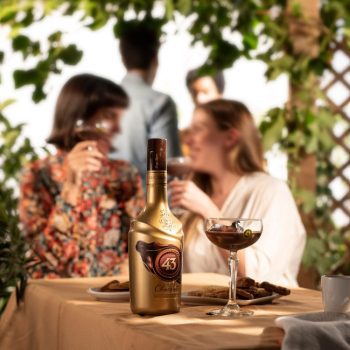This website uses cookies so that we can provide you with the best user experience possible. Cookie information is stored in your browser and performs functions such as recognising you when you return to our website and helping our team to understand which sections of the website you find most interesting and useful.
How liqueurs can appeal to Gen Z
By Tom Bruce-GardyneIngenuity and innovation are behind the increasing success of the liqueurs sector, with coffee and chocolate expressions targeting indulgent experiences, while lower-ABV brands hone in on the wellness trend.

*This feature was originally published in the November 2023 issue of The Spirits Business magazine.
“The biggest challenge today for the entire business is Generation Z,” says Oliver Svatek, brand director for Spain’s Licor 43, whose sales broke the million-case barrier in late 2022. “It’s the new, younger consumers who are drinking less, and obviously they are looking for lower strength.” But with liqueurs being the most differentiated, dynamic and shape-shifting of categories, he quickly acknowledges: “It’s also an opportunity.”
The strength of Licor 43, with its secret blend of 43 herbs and spices, has remained a constant 31% ABV, but that has not prevented its owner, Zamora Company, from developing a raft of lower-strength RTDs from 2020 onwards. The first was its Cocktail 43 Fresco berry and lemon, followed by apple flavour, all with a modest 5.6% ABV. Innovation was ramped up for the brand’s 75th anniversary in 2021, with the launch of the Mexican coffee-infused Carajillo 43 RTD and Licor 43 and Milk RTD, both at 10% ABV, and Licor 43 Chocolate at 16% ABV.
There has been a buzz around the low-and-no ‘spirits’ category for the past five years, and Godelief van Erve, De Kuyper’s global marketing director, reckons: “It’s still very important, especially with a younger target audience who really are drinking less, and who try to take care of their alcohol intake. In a way liqueurs are perfect for that because a lot of spirits are very high in alcohol, while a lot of liqueurs are around 15% ABV to 20% ABV. If you have them with a good mixer, you can create a very nice, low-ABV cocktail.”
Tasty and refreshing
Cut out that shot of full-strength gin or vodka, for example, and you can have something tasty and refreshing with a good deal less alcohol, but only, in van Erve’s words: “If you have a really great-tasting liqueur that is strong enough to carry the drink, and make an interesting, flavourful cocktail.” Asked for an example, she says: “We have our Fizzy Peachtree, which is a drink we are really pushing. In Europe people make it with sparkling water and a squeeze of lime. In Asia they do it more with tonic.”
 The overall trend in the category “especially among younger consumers, has been one of drinking less but better”, she says. “They’re choosing cocktails, or something that adds value and quality, and as cocktails are growing this has had a very positive impact on liqueurs because they are the flavour-maker in these drinks.” Van Erve believes the quality of liqueurs has been improving, at least at De Kuyper.
The overall trend in the category “especially among younger consumers, has been one of drinking less but better”, she says. “They’re choosing cocktails, or something that adds value and quality, and as cocktails are growing this has had a very positive impact on liqueurs because they are the flavour-maker in these drinks.” Van Erve believes the quality of liqueurs has been improving, at least at De Kuyper.
“For instance, a few years ago we introduced our Bartender Editions, which are liqueurs made with famous bartenders, and they have specific and interesting flavour combinations,” she says. Among them are Muyu Jasmine Verte and Acqua Bianca – a modern re-working of a late-19th-century recipe, by Salvatore Calabrese, that includes peppermint, rose, lemon, and bergamot.
Aside from these more floral and herbal concoctions, she says: “In general we see sour and citrus flavours coming back, and anything with agave and also retro cocktails.” Drinks such as the Blue Lagoon and Cosmopolitan from the 1980s have been given a new lease of life. “And there’s a revival of what we call ‘new-wave classics’,” she says. “For instance, the Penicillin, Paper Plane and Clover Club. The reason that a cocktail like a Clover Club is popular is also because of its colour. Everything now really needs to look fantastic. It needs to be Instagrammable, and having a beautiful pink cocktail with a nice foam layer, like a Clover Club, is attractive for consumers to share.”
Showcase the drink
Licor 43’s Svatek agrees, saying: “The product itself needs to be yummy, as taste is everything, and it’s also how we showcase the drink. It has to be way more Instagrammable than before.”
He also mentions the rise of the home-grown mixologist that sprang out of Covid-19 lockdowns, and boosted the liqueurs market. This trend, he says is “still there. People got used to the idea that you can have a similar experience to the on-trade at home.”
Julka Villa, Campari’s group global head of marketing, agrees. “Since the pandemic, the ‘home premise’ has bloomed,” she says. “Many are drinking less and better, and we’re seeing an uplift in consumers investing in more quality liquids to enjoy at home – this is a real opportunity for Grand Marnier.” In the US, the brand has a strong focus on the Margarita, the country’s top cocktail, which has been “largely boosted by super and ultra-premium Tequila”, she says. “The high quality of our product makes it the right combination to serve a perfect Margarita, or what we like to call a Grand Margarita.”
In the US, Park Street, a back-office solutions provider specialising in importing, distribution, freight logistics and compliance, recently published a report on the US cordials and liqueurs market. The sector grew by 3.1% in 2020. It stated: ‘Even as on-premise establishments reopened, the category continued to flourish, growing by 6.2% in 2021, indicating that the trend of at-home mixology is here to stay.”
Another factor mentioned by Svatek is “the innovation trend in indulgence”, which he sees as “a counter-trend to being healthy. From time to time, you want an occasion you’re really going to enjoy.” As for the brand that started the craze, he points to Baileys, the world’s most popular liqueur, with sales of 8.8 million cases last year.
“Baileys is all about offering adult indulgent, treating experiences and nothing is more indulgent or universally beloved than chocolate,” says global marketing director; Paul Carton about the newly launched Baileys Chocolate, which is now a permanent fixture in the range. In what sounds like a sugary riposte to the entire wellness movement, he claims it won a recent award by: “Activating all five senses, with its aromatic and velvety-smooth pour, lusciously rich texture and deliciously indulgent taste that coats the palate with the sensation of melted chocolate.”
Carton believes that the desire to treat oneself has only grown in these uncertain times. “While the experience of treating may be individual and hyper local, the trend is universal.”
When asked about efforts to keep this long-established brand fresh and relevant, he talks of “inspiring consumers globally to get creative with Baileys all year round, from turning that hot choc in front of a movie on a Friday night into something more indulgent, to adding some extra deliciousness to iced coffees with friends on a lazy Saturday afternoon in summer”.

Equally indulgent is Licor 43’s latest offering – its Crème Brûlée limited edition. “Our first pre-orders from customers are really very promising,” says Svatek, who believes it will prove to be as successful as the brand’s chocolate variant, launched in 2021. “Crème brûlée,” he adds, “is one of the most popular desserts around the world.” No doubt he and his team are pouring over other popular puddings to bottle. Meanwhile Licor 43’s sister brand – Villa Massa Limoncello is promoting itself as a Spritz, “and as a sour alternative to Aperol,” he explains.
A separate trend to all that is sweet and chocolatey is the growth in coffee liqueurs, a category now worth US$293m, according to Olivia Kupfer, global and US brand director at Mr Black Coffee Liqueur, which was acquired by Diageo a year ago. Its main market is the US, where before “2020, the popularity of the Espresso Martini was predominantly among pockets of Aussie and British expats in New York, who ordered and kept the classic serve alive”, she says.
“But 2021 marked a turning point. Given the US obsession with speciality coffee, it was only a matter of time before the Espresso Martini became ubiquitous on cocktail menus.”
Mr Black claims to be the fastest-growing brand in its category, and “is now available in more than 22 countries, including Australia, the UK, and the US,” she says. “And we’re continuing to expand, given the growth in coffee culture and coffee cocktails worldwide.” She explains how “the beans are carefully roasted and cold brewed to extract their unique flavours and aromas”, and says with the global interest in coffee, and coffee cocktails, Mr Black’s growth trajectory appears promising. However, it is in an increasingly crowded market, and brands such as Licor 43 are doing well in Latin America, with its slightly sweeter take on the Espresso Martini.
Embracing coffee is a great example of the category’s ingenuity, and the same is true of cream liqueurs, where Creamy Creation keeps innovating for its trade customers. “We are continuously expanding our offerings to include a wide variety of bases: from dairy, oats and plant-based to our latest vegan coconut,” says a spokesperson.
“We also exploring different formats, from low-ABV ready-to-drink beverages, to spiked slushie options for spirits brands looking to tap into a different space.”

